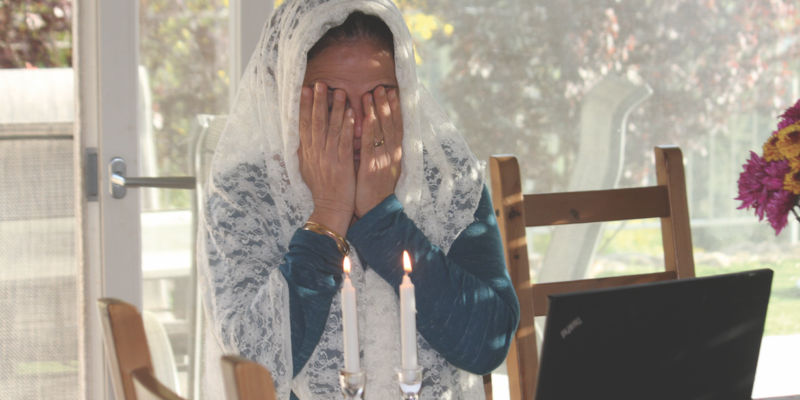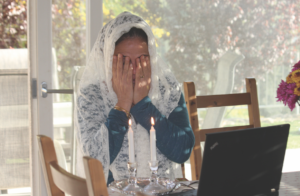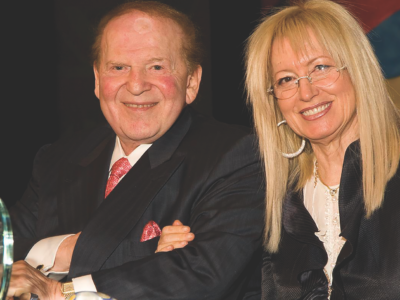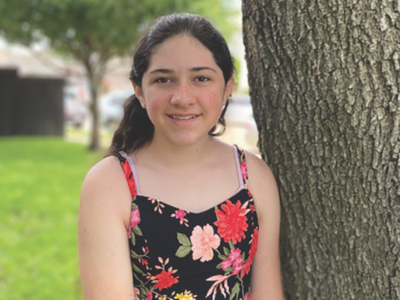In just a few short months, the COVID-19 pandemic has cut through the fabric of security, wellness and physical proximity that we once took for granted. With a huge swath of the country in self-imposed or state-mandated quarantine, most organizations have been conducting meetings and programs via Zoom and other online platforms. During this time when people are most in need of comfort, spiritual connection and guidance, the doors of synagogues and other houses of worship remain closed across California.
The current ban on indoor worship services has compelled congregations and their spiritual leaders to find new ways to reach out to their participants. This includes our independent congregation, San Diego Outreach Synagogue (SDOS). Since mid-March, we have shifted all of our programs, worship services and classes to online platforms. Our “without walls” synagogue had previously been meeting once a month in a rented room at a recreation center for Friday night services and a communal Shabbat dinner. SDOS also held discussion programs at local coffee shops, celebrated Jewish holidays in congregants’ homes, and hosted a community Passover Seder and High Holy Days services in a larger rented venue.
Although all SDOS in-person gatherings have been suspended since mid-March, we have seized the opportunity to expand our offerings through online platforms. As a “without walls” synagogue with minimal monthly overhead costs, we have increased the frequency of our programs from about twice a month to two to four times per week. We now offer weekly Friday evening musical services and a Havdalah musical program most Saturday evenings. This past April, the SDOS Zoom Seder attracted about 100 people, and our “Introduction to Judaism” class includes participants from across the county and even Rosarito, Mexico. Some of our online services and programs have included guest clergy, musicians, speakers and participants from outside of San Diego.
It is no secret that even prior to the pandemic, Jewish synagogue affiliation was on the decline. The huge edifices that exist today are based on a model that flourished in the 1950s, when Jews in the post-war era moved en masse to the suburbs, erecting structures that would reflect their newfound status as successful citizens who had achieved the American dream. Most synagogues were affiliated with the Orthodox, Conservative, Reform, or Reconstructionist movements.
In the late 20th and early 21st century, independent congregations unaffiliated with Jewish denominations emerged across the country. In order to keep expenses down, these new communities rented space in recreation centers, churches, office parks, etc., with most having no intention of owning their own building. Many of these independent, non-denominational congregations have been founded and led by well-known visionaries such as Rabbis Sharon Brous of IKAR and Naomi Levy of Nashuva in Los Angeles.
Many synagogues have growing legitimate concerns about attracting and retaining members to pay their considerable fixed expenses. Across the country, many older, established synagogues with dwindling memberships have had to merge (some across denominational lines) just to survive. Other previously thriving congregations have been forced to close altogether due to shifting demographics and diminishing membership. The vast majority of Jews in San Diego County are not affiliated with any congregation. Prior to the current pandemic, if you attended a Shabbat service in most local brick-and-mortar synagogues, you would find no more than a small group of devoted worshippers dotting the landscape of a large sanctuary.
Although most Jews in San Diego County choose not to pay thousands of dollars per year to join an established synagogue, they still want to connect with other Jews, Jewish traditions and practices. Many unaffiliated Jews are interested in finding meaning through the study of Torah and other Jewish texts. They want to celebrate Shabbat and Jewish holidays and hope to understand how Judaism can inform and inspire their lives. They want to be uplifted in prayer but may find this difficult if services are conducted mostly in Hebrew, a language they do not understand. Since most San Diegans who identify as Jews are not interested in the traditional synagogue model, now is the ideal time to offer more accessible and less costly ways to experience Judaism.
Before the current pandemic, many synagogues were reluctant to live-stream their services and programs, perhaps out of concern that if people could attend these programs without being physically present, they might not become or remain dues-paying members. Due to the current prolonged closing of houses of worship however, nearly all local synagogues have been compelled to offer their services, classes and events online in order to serve their congregants’ needs. We now have an opportunity to expand our concept of a thriving congregation beyond simply “Jews in the pews” and to think creatively in presenting meaningful opportunities for Jewish prayer, learning, and acts of loving-kindness to those in need.
In 2016, I produced and widely distributed my CD, HINENI: Music for the High Holy Days in order to bring the melodies of these sacred holidays to thousands of Jews across the country in hospitals and nursing homes or who were otherwise homebound. This year, SDOS is working to bring our live-streamed musical High Holy Days services at no charge to people in hospitals, nursing homes or retirement communities in San Diego and beyond, so that these individuals will not have to celebrate these holidays alone.
The current pandemic presents all congregations the opportunity to expand their outreach and welcome people into their community, even those whose participation may be solely online. We have an amazing chance now to expand our concept of what a spiritual community can be in a post-pandemic society. Most synagogues that simply return to “business as usual” are unlikely to survive in the long-term.
This health crisis challenges all Jewish congregations and leaders to adapt to changing circumstances to meet the needs of those they serve as well as those yearning to experience some form of Jewish connection in their lives. Innovation in developing new meaningful ways to help Jews “do Jewish” has been the cornerstone of our survival as a people for thousands of years. By continuing to do so in our evolving world, we will all be the beneficiaries.











Dear Rabbi Cantor Sheri Weiss, I believe that you are a loving ANGEL and thanks for doing this, and for your hard volunteer work which is a צדקה גדולה, and for your tirelessness, and for your endless compassionate dedication. In appreciation and with Gratitude and Blessings, Janine. 🙂